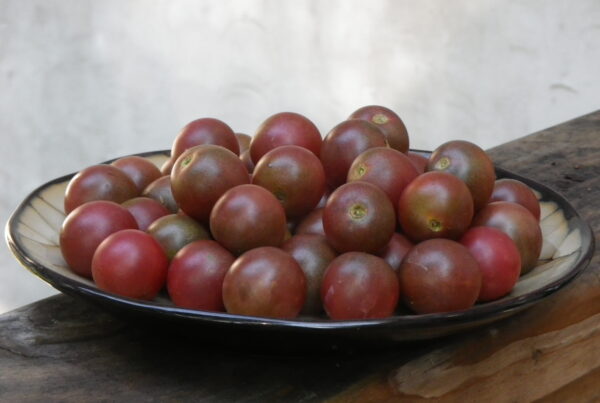Cost-sharing for Organic and Transitioning Farmers
Organic and Transitional Education and Certification Program (OTECP)
Organic Certification Cost-Share Program (OCCSP)
Apply by October 31, 2022
Cost-share funding is now available to USDA certified organic and transitioning-organic producers and handlers. While the OCCSP currently provides just 50% cost share up to $500 per scope (e.g. organic crops, organic animal products, processing and handling), the OTECP supplements this with an additional 25% up to $250, and also provides transitioning farmers with cost share for pre-certification and development of an organic system plan, educational events, and soil testing. Learn more about OTECP and OCCSP including links to application instructions.
Conservation Funding Opportunities
On-farm Conservation Innovation Grants
Application Deadline September 22
The USDA has announced $25 million in funding available through the Natural Resources Conservation Service (NRCS) for on-farm conservation innovations in the following priority areas:
- Soil Health Demonstration Trials ($10 million of the total will be dedicated to these)
- Climate Smart Agricultural Solutions (C sequestration, GHG reduction)
- Nutrient Management and nutrient efficiency
- Irrigation Water Management Technologies – precision irrigation and water savings
For more information including how to apply, visit NSAC’s on-farm CIG blog post.
Grazing Lands Conservation Initiative
Application Deadline September 22
On August 8, the USDA announced $12 million in funds available for the Grazing Lands Conservation Initiative (GLCI) Cooperative Agreements. GLCI funds can be used for:
- Grazing Technical assistance
- Education (Conferences, workshops, webinars, and other educational events).
- Grazing networks (field days, pasture walks, peer-to-peer knowledge exchange, mentorship)
- NRCS Workforce Development, including mentorship, training, and apprenticeship arrangements.
- Youth outreach related to grazing land management
- A limited amount of funds in each region may be used to conduct on-farm research as a supplemental goal for any projects conducting the above activities.
Eligible entities for cooperative agreements include:
- Nonprofit organizations having a 501(c)(3) status with the Internal Revenue Service (IRS) (other than institutions of higher education)
- Farmer or rancher organizations
- State and local conservation governmental agencies
- Agricultural Extension Services
- Native American tribal governments (Federally recognized)
- Native American tribal organizations (other than Federally recognized tribal governments)
- Land grant universities including 1890 or 1994 land grant institutions, Hispanic-serving institutions, or other minority serving institutions, such as an historically Black college or university, a tribally controlled college or university, or Asian American and Pacific Islander-serving institution.
Cooperative agreements funded through GLCI this year will range from $150,000 to $300,000, totaling $12 million. There is no minimum award amount, no match requirement, and funded projects can last up to two years. To apply or learn more, see the call for applications. The deadline for applying is September 22, 2022, with notification of funding decisions by October 20. Applicants are encouraged to start their paperwork as early as possible since multiple government identification numbers and accounts are needed to successfully apply.
Let’s make good use of this program. The current funding level is less than half of what it was before the program was suspended, and with all the potential for successful and sustainable grazing systems to reduce the environmental and climate footprint of livestock production, much expanded funding is warranted. The greater demand for GLCI evidenced in the current funding cycle, the more likely we will get Congress to increase funding in future years.
Wetland Reserve Enhancement Partnership
Proposal Deadline September 23
The U.S. Department of Agriculture (USDA) is investing up to $20 million in fiscal 2023 to help conservation partners protect and restore critical wetlands through the Wetland Reserve Enhancement Partnership (WREP). USDA’s Natural Resources Conservation Service (NRCS) is prioritizing proposals that support efforts to mitigate climate change by restoring wetlands while also prioritizing assistance to underserved communities. Last year, NRCS funded $11 million in partnerships. Proposals from partners are due Sept. 23, 2022.
Full details are available here: https://www.nrcs.usda.gov/wps/portal/nrcs/detail/national/newsroom/releases/?cid=nrcseprd1947035
Conservation Reserve Program
Transitions Incentives Program (CRP TIP) Outreach
TIP provides financial incentives to CRP participants with expiring contracts, if they sell or rent the land to a beginning producer, veteran farmer or rancher, or a producer from a socially disadvantaged group.
FSA is making available up to $4.5 million in funding and expects to award 15 to 20 partner and stakeholder organizations to conduct outreach and provide technical assistance to promote awareness and understanding of CRP TIP among agricultural communities, in particular those who are military veterans, new to farming, or historically underserved.
Full details are available here: https://www.fsa.usda.gov/news-room/news-releases/2022/usda-invests-14-5-million-in-taxpayer-education-program-outreach-efforts-for-farmers-and-ranchers
Eric Hansen
Legislative Affairs Specialist
External Affairs Division
Farm Production and Conservation Business Center
United States Department of Agriculture
m: 202-590-6902
In the News
Inflation Reduction Act:
What’s in it for Agriculture and Climate Mitigation
With the Inflation Reduction Act (IRA) passed and signed into law, new opportunities have opened for farmers, landowners, and service providers to expand their conservation efforts, particularly in the area of climate-friendly farming. The new law includes some $20 billion in additional funding for NRCS conservation programs, with emphasis on practices that sequester carbon and reduce the net greenhouse gas (GHG) footprint of farming operations.
A scaled-down version of the Biden Administration’s “Build Back Better” plan, the IRA represents an unprecedented federal investment in climate mitigation and resilience. In addition to the NRCS funding, the IRA includes $4 billion for the Department of the Interior to undertake climate resilience endeavors, especially for the drought-impacted Colorado River basin. Check out the NSAC blog, deep dive into the IRA, for more on this groundbreaking new legislation and conservation funding. NSAC will be engaging with the Administration to help ensure that the potential benefits of these new funds will be fully realized.
Diversified Growing: Farmers Cultivating Community,
and the Role of SARE funding
Are you getting tired of “doom scrolling” and looking for some uplifting news? NSAC Grassroots Fellow Madeline Turner has written a blog post featuring several innovative farming enterprises in urban and rural environments that show how we might transform our entire agricultural and food system to restore soils, protect resources, build racial equity and social capital from farm to fork, and provide nourishing food for all. Several of these community based endeavors have received vital support from the USDA Sustainable Agriculture Research and Education (SARE) program. Check it out.






